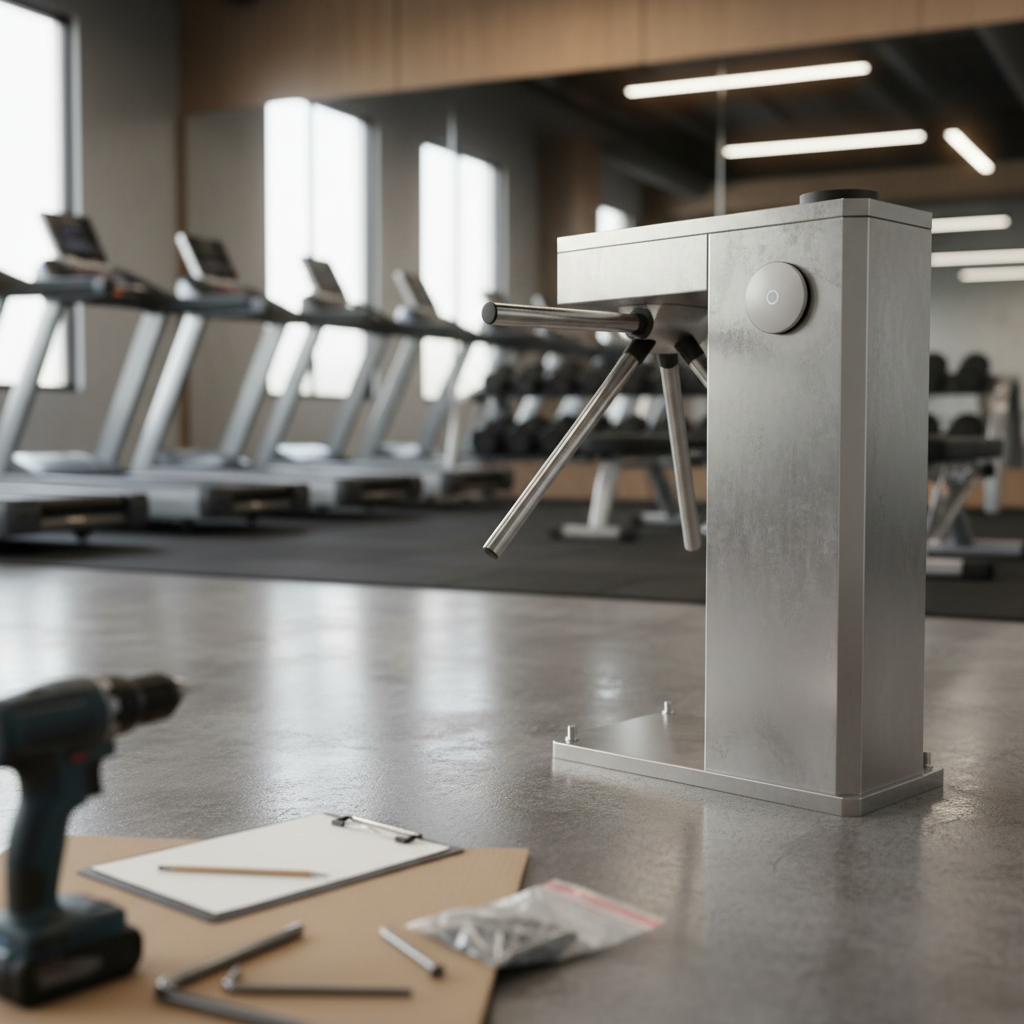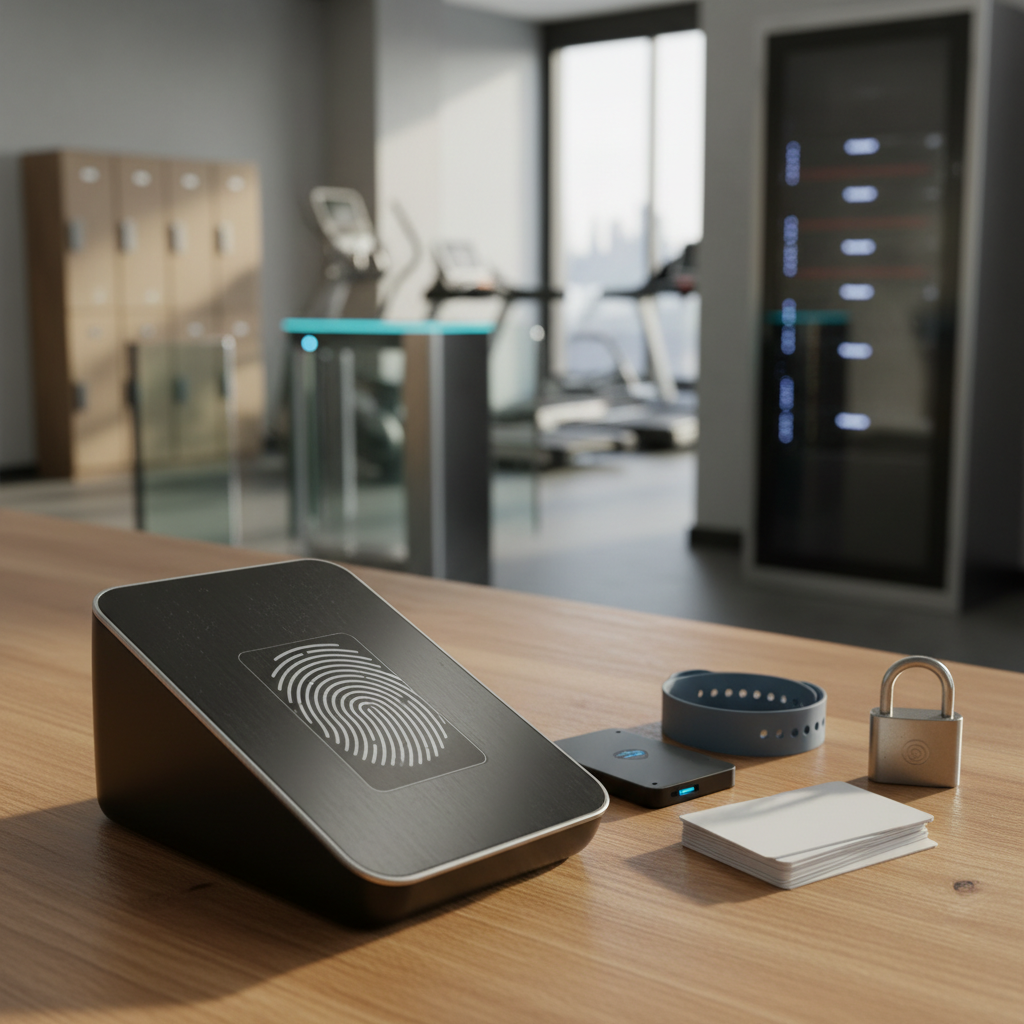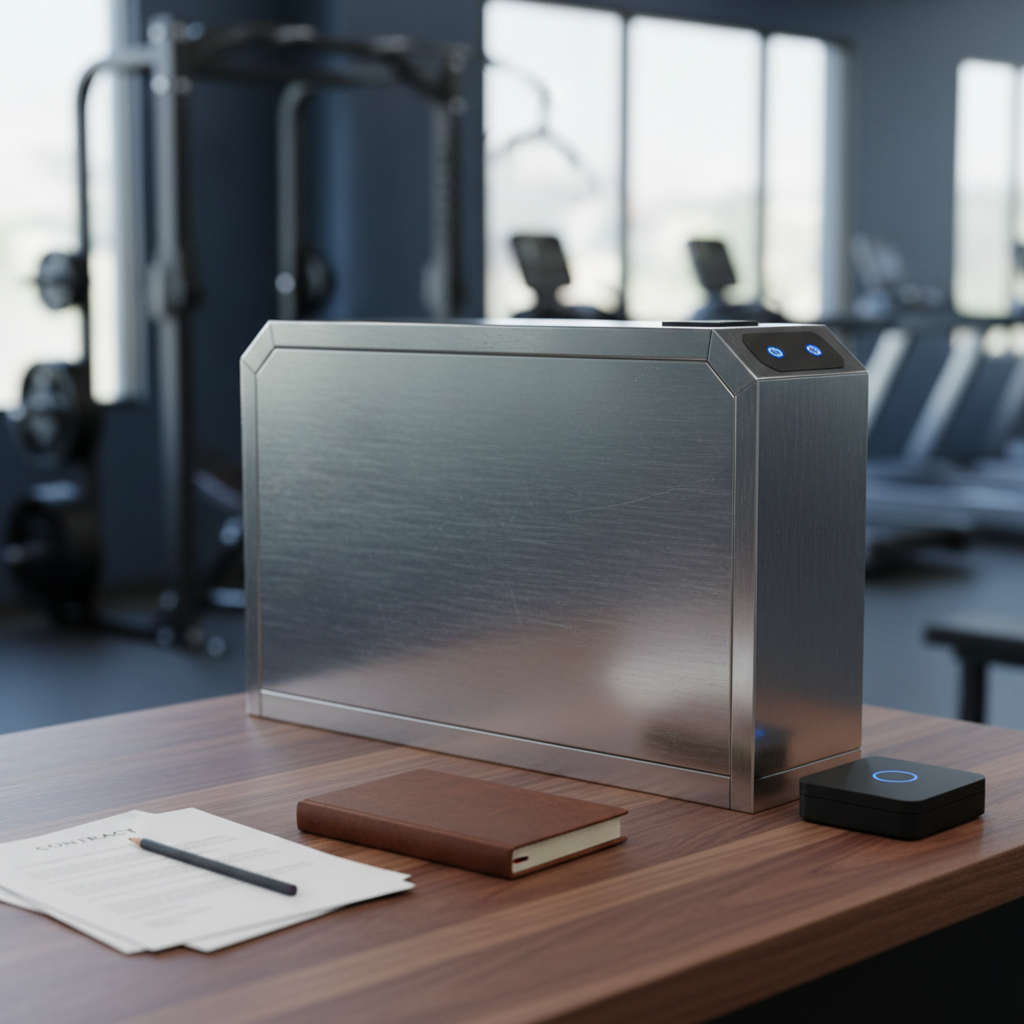Smart Ways to Cut Gym Turnstile Installation Costs
Installing turnstiles and gates at your gym doesn't have to drain your budget. Many gym owners assume they need expensive certified installers for the entire project, but the reality is much simpler and more cost-effective.
The key to saving money is understanding which parts of the installation actually require professionals and which parts almost anyone can handle. With the right turnstile choice, you can dramatically reduce installation costs while maintaining quality and warranty coverage.
Understanding What Actually Needs Professional Installation
Here's an important fact that many gym owners don't realize: the physical installation of turnstiles is straightforward work that doesn't require specialized certification in most cases.
The only part that legally requires a licensed professional is the electrical connection. Once the turnstile is physically installed and positioned, a certified electrician handles the power supply connection as the final step.
The actual turnstile placement, floor mounting, and positioning can be done by anyone comfortable with basic tools and following instructions. This separation of physical installation from electrical work is where significant cost savings happen.
Choose Turnstiles Designed for Simple Setup
Not all gym turnstiles are created equal when it comes to installation requirements. Some manufacturers design their systems specifically to be installer-friendly, while others require expensive certified technicians for the entire process.
When researching turnstiles, ask suppliers directly: "Can our own maintenance staff or a general contractor install this, or do we need your certified installers?" This single question can reveal whether you're looking at a cost-effective option or an expensive one.
The DIY-Friendly Installation Process
Modern gym turnstiles designed for easy installation follow a simple process that keeps costs down.
First comes the physical installation, which doesn't require special certification. The turnstile unit gets positioned in the correct location where you want it to be.
Next, anyone capable of using a drill and following instructions can secure the turnstile to the floor. Most systems use standard bolts and mounting hardware that come included with the unit.
Then, if the turnstile includes access control readers or devices, these typically clip or mount onto the turnstile frame and simple drilling for cables and screws is needed.
Finally, once the turnstile is fully installed and secured, the licensed electrician comes to connect the power supply. This is the only step that legally requires certification, and it's usually quick work that won't cost much.
Warranty Protection Without Certified Installers
A critical cost consideration is warranty coverage. Some manufacturers void warranties if you don't use their certified installers, which forces you into expensive installation contracts.
Before purchasing any turnstile system, verify the warranty terms regarding installation. The best manufacturers for budget-conscious gym owners explicitly allow self-installation or installation by general contractors without affecting warranty coverage.
Ask the supplier: "Will the warranty remain valid if we handle the installation ourselves?" Get this answer in writing before making your purchase.
Manufacturers confident in their product design typically have no problem with self-installation because their turnstiles are built to be simple and reliable. If a supplier insists on certified installation for warranty coverage, it might signal an unnecessarily complex system.
Who Can Actually Install Your Turnstiles
For most gyms, the physical turnstile installation can be handled by:
Your gym's regular maintenance staff, if they're comfortable with basic assembly and mounting tasks. Many gym maintenance workers have the skills needed to position and secure turnstiles properly.
General contractors or handymen you already work with for gym repairs and improvements. There's no need to hire specialists for what amounts to measuring, positioning, and bolting equipment to the floor.
Equipment installers who normally set up your gym machines. If someone can install a cable machine or treadmill properly, they can certainly handle turnstile mounting.
Cost Comparison: Certified vs. Self-Installation
Understanding the cost difference helps explain why turnstile choice matters so much.
Certified installer packages often cost as much as the turnstile or gate itself. For a one lane of speed gate you might pay $1,500-$3,000 for professional installation.
Self-installation with contractor help typically costs much less. You'll handle the mounting yourself or pay a general contractor a few hundred dollars at most, then pay a licensed electrician for perhaps few minutes of work for the electrical connection as the final step.
Selecting the Right Turnstile Supplier
When comparing turnstile options, installation flexibility should be factored in as a decision factor alongside hardware price and features.
Contact suppliers and ask specific questions about installation requirements. Don't just ask "Is installation easy?" Instead ask "Can we install this ourselves?" and "What exactly requires a professional?"
Look for manufacturers who provide detailed installation manuals and videos. Companies that support self-installation typically offer excellent documentation because they know customers will be doing the work themselves.
Check if the supplier offers phone or video support during installation. Good suppliers stand behind their DIY-friendly design with real help when customers need guidance.
Avoid systems with proprietary mounting systems or special tools requirements. Standard mounting methods mean anyone can do the work and replacement parts are readily available if needed.
What to Verify Before Purchase
Before committing to any turnstile purchase, confirm these installation-related points:
Verify that warranty coverage remains intact with self-installation. Get written confirmation that only electrical work needs a licensed professional.
Check that mounting hardware comes included. You shouldn't need to source special bolts or brackets separately.
Confirm that installation instructions are provided in a language and format you can understand. Video guides are particularly helpful.
Ask about technical support availability during installation. Knowing you can call for help if needed provides valuable peace of mind.
Understand the electrical requirements and confirm these match what your electrician can easily provide. Standard power requirements keep costs down.
Planning Your Installation
Smart planning maximizes your cost savings on turnstile installation.
Complete the physical installation first. Position and secure the turnstiles to the floor, then schedule the electrical work as the final step. This way you're not paying for contractor waiting time.
Choose installation timing during slow hours. This gives you flexibility to take your time without disrupting members.
Have all tools and hardware ready before starting. Most installations need only basic tools: drill, wrenches, level, and measuring tape.
Consider doing one turnstile first as a learning experience. Once you understand the process, additional units go much faster.
Access Control Integration
If your turnstiles include access control devices like card readers or biometric scanners, installation simplicity still applies.
Most modern access control devices mount directly on top of the turnstile. No special installation skills are needed.
The access control software setup is separate from physical installation. Many systems offer cloud-based setup that the access control supplier (often different from turnstile provider) can configure remotely after cables are connected.
Long-Term Cost Benefits
Choosing turnstiles that allow simple installation saves money beyond the initial setup.
If you need to relocate turnstiles later due to gym layout changes, you can do it yourself. Systems requiring certified installers mean paying those fees again for any future moves.
Maintenance and repairs are often simpler with turnstiles designed for easy installation. If something needs adjustment or replacement, you're not locked into expensive service contracts.
Future expansion becomes more affordable. Adding more turnstiles as your gym grows doesn't mean paying installation fees each time.
Making the Smart Choice
Cutting installation costs doesn't mean sacrificing quality or security. It means choosing turnstiles designed with practical installation in mind.
The best approach is simple: select turnstile suppliers who trust gym owners to handle installation with only basic skills and tools. Verify that warranties remain valid without certified installers. Confirm that only electrical work needs professional licensing.
When you find turnstiles meeting these criteria, you've found the sweet spot of cost-effective installation. You'll pay for the equipment and a moment of electrical work, not thousands in installation fees.
Remember to ask the right questions before purchasing. "Can anyone install this, or do we need your certified installers?" and "Does self-installation affect the warranty?" These two questions reveal whether you're looking at a budget-friendly option or an expensive one.
With the right turnstile choice, your gym gets professional security results while keeping installation costs minimal. The physical installation work is straightforward enough that your own staff or a general contractor can handle it, leaving only the electrical connection for a licensed professional as the final step. This approach cuts installation costs dramatically while still delivering the secure, reliable access control your gym needs.



